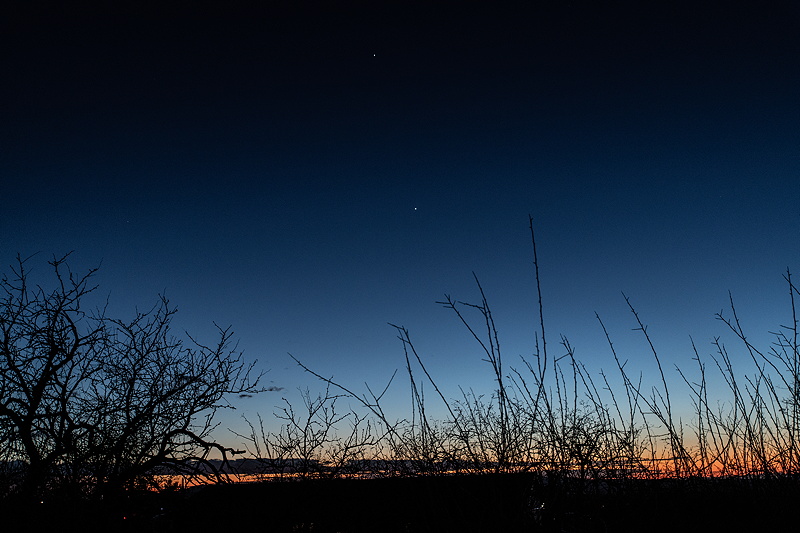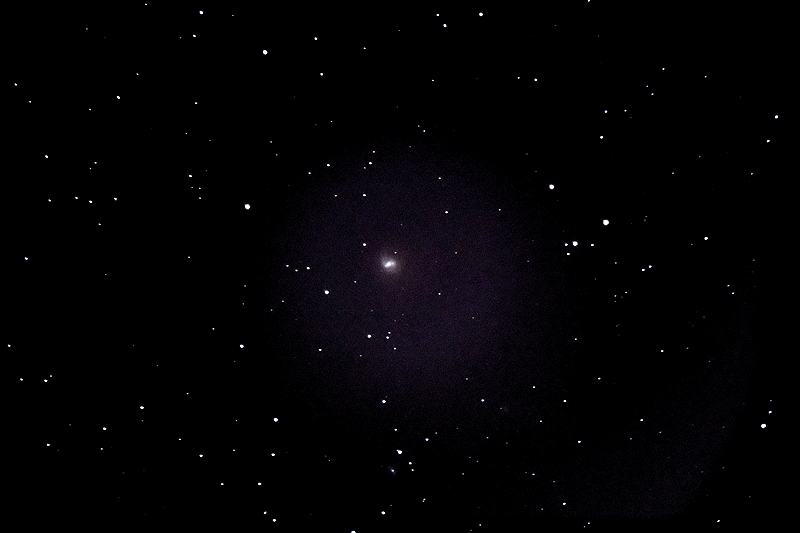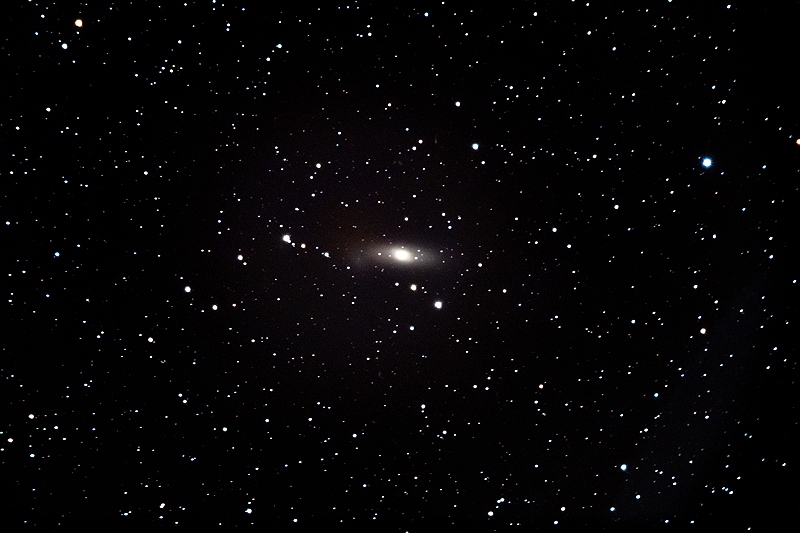Herschel 400 Galaxies imaging aborted by clouds
Posted: 19 February 2023
Friday, 17 February 2023, was cloudy and very windy. The sky mostly cleared on Saturday, 18 February.
|
Open: Saturday, 18 February 2023, 1820 MST Temperature: 71°F |
Session: 1835 Conditions: Mostly clear |
Equipment:
12" f/8 LX600 w/StarLock
2" 24mm UWA eyepiece
2" 5.5mm 100° eyepiece
Camera:
D850 DSLR
1825 MST: LX600 ON, StarLock OFF, High Precision OFF.
Viewed Venus, Jupiter, and Mars, 102X.
Viewed Rigel and its companion star, 443X. Then viewed Sirius, 443X. Tried to view Sirius B (the "Pup Star"), which is about the same separation as Rigel and its companion, but without success as it was lost in the glare of bright Sirius.
1847 MST: Took this D850 DSLR photo of Jupiter and Venus (f/5.6, 1/4sec, FL 36mm).

Mouseover or tap on image
Jupiter and Venus are approaching a close conjunction of 0.5° on 1 March 2023 when they will be about a Moon's width apart.
I then prepared the D850 DSLR for Herschel 400 galaxy imaging. With clouds not forecasted to arrive until about midnight, I planned to image eight galaxies this session.
1858 MST: High Precision ON.
Slewed to NGC1022 (galaxy). At Magnitude +11.1, it was not yet visible in the twilight sky.
1913 MST: NGC1022 was now faintly visible, 102X. Mounted the D850 DSLR at prime focus, focused on Rigel, and locked the 12" mirror.
1920 MST: StarLock ON.
Began imaging NGC1022 (galaxy). Unfortunately, clouds in the southwestern sky almost immediately began interferring with imaging. I was able to only get one good StarLock autoguided exposure (1 min, ISO 3200).

NGC1023 (galaxy) was still clear of clouds so I was able to get this StarLock autoguided image (5 minutes, ISO 3200).

However, clouds were rapidly increasing from the southwest. I slewed to five more galaxies but they were all obscured by clouds. I decided to give up doing any more imaging this session. So much for that cloud forecast! And with cloudy nights in the forecast for the next week, it will be awhile before I can continue imaging Herschel 400 Catalog objects.
2000 MST: StarLock OFF.
I took a quick look at M42 (Orion Nebula), 102X.
2009 MST: LX600 OFF.
|
Close: Saturday, 18 February 2023, 2017 MST Temperature: 54°F |
Session Length: 1h 57m Conditions: Mostly cloudy |
Comments are welcome using Email. Twitter users can use the button below to tweet this report to their followers. Thanks.
Cassiopeia Observatory Home Page
Copyright ©2023 Michael L. Weasner / mweasner@mac.com. Email Etiquette.
URL = http://www.weasner.com/co/Reports/2023/02/19/index.html
